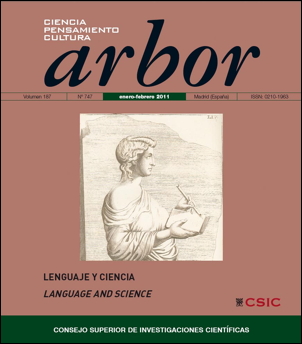Terms of Natural Kind and Theoretical Identities
DOI:
https://doi.org/10.3989/arbor.2011.747n1006Keywords:
Natural kind term, theoretical identity, necessity, rigid designatorAbstract
Kripke asserts in Naming and Necessity that there are certain similarities between proper names and natural kind terms. One of them is that both sorts of expressions occur in identity statements that are, if true, necessary a posteriori; in the case of natural kind terms Kripke designates these statements “theoretical identities”. Kripke claims that this similarity follows from another, which consists in that both sorts of expressions are rigid designators. My aim in this paper is to argue that, though it can be claimed that natural kind terms are rigid designators, this property of natural kind terms does not make possible to justify the feature of necessity that Kripke attributes to theoretical identities. In this regard I will concentrate my considerations on one sort of natural kind term, the terms of chemical substances, to which I will allude as “substance terms”.
Downloads
References
Kaplan, David (1989): “Afterthoughts”, en Almog, Joseph et al. (eds.), Themes from Kaplan, Nueva York: Oxford University Press, pp. 565-614.
Kripke, Saul (1971): “Identity and necessity”, en Munitz, Milton (ed.), Identity and Individuation, Nueva York: New York University Press, pp. 135-164.
Kripke, Saul (1980): Naming and Necessity, Oxford: Blackwell. Reimp. revisada y con prefacio añadido de “Naming and necessity”, en Davidson, Donald y Gilbert Harman (eds.), Semantics of Natural Language, Dordrecht: Reidel, 1972.
Salmon, Nathan (1981): Reference and Essence, Princeton: Princeton University Press.
Downloads
Published
How to Cite
Issue
Section
License
Copyright (c) 2011 Consejo Superior de Investigaciones Científicas (CSIC)

This work is licensed under a Creative Commons Attribution 4.0 International License.
© CSIC. Manuscripts published in both the printed and online versions of this Journal are the property of Consejo Superior de Investigaciones Científicas, and quoting this source is a requirement for any partial or full reproduction.
All contents of this electronic edition, except where otherwise noted, are distributed under a “Creative Commons Attribution 4.0 International” (CC BY 4.0) License. You may read the basic information and the legal text of the license. The indication of the CC BY 4.0 License must be expressly stated in this way when necessary.
Self-archiving in repositories, personal webpages or similar, of any version other than the published by the Editor, is not allowed.














